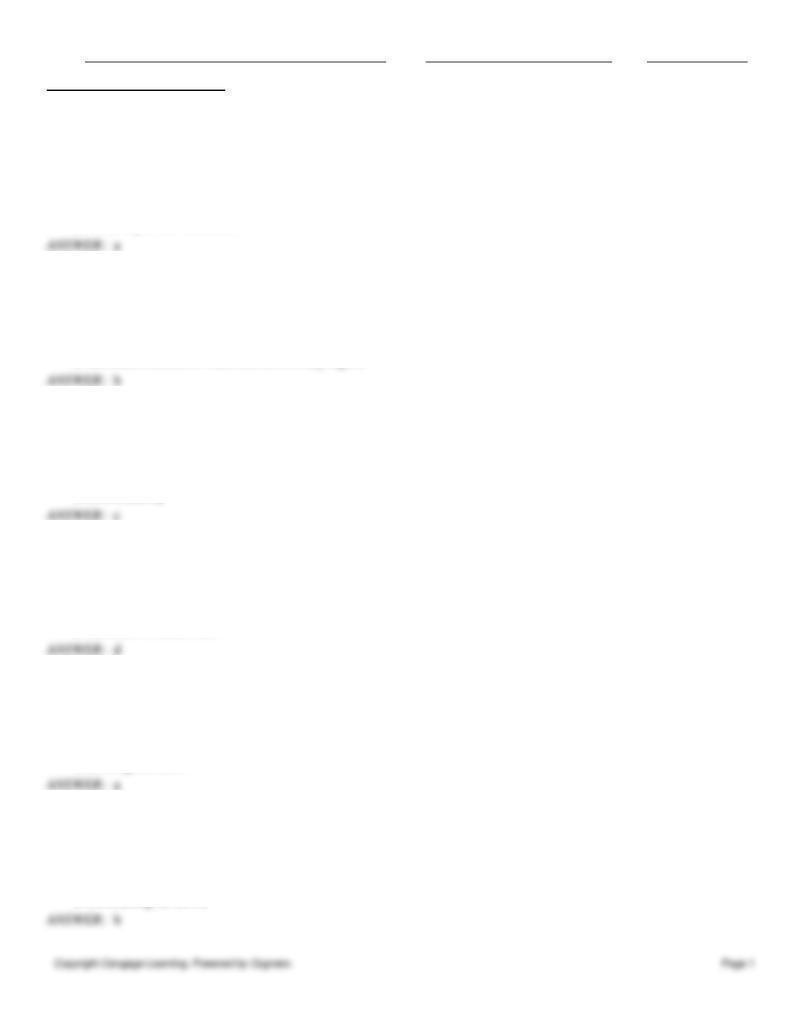
Name:
Class:
Date:
Chapter 10: Baroque Europe
Multiple Choice
1. A major international conflict during the 17th century was the _____.
a.
Thirty Years’ War
b.
Great Iconoclasm
c.
Great Schism
d.
discovery of the Americas
2. A significant outcome of the Treaty of Westphalia was _____.
a.
the division of Germany
b.
religious freedom
c.
greater power for the Hapsburg Empire
d.
the establishment of Catholicism in every region
3. In Italy _____ remained the major patron of art throughout the 17th century.
a.
members of nobility
b.
the middle class
c.
the Catholic Church
d.
the monarchy
4. Bernini’s baldacchino in Saint Peter’s marks the high altar and _____.
a.
the location of the Last Supper
b.
the tomb of Urban VIII
c.
where Saint Peter preached
d.
the tomb of Saint Peter
5. Bernini’s design for the piazza of Saint Peter’s resembled _____.
a.
a gesture of embrace
b.
a perfect circle
c.
the stadium of Domitian
d.
an irregular shell
6. Carlo Maderno departed from Bramante’s and Michelangelo’s designs for Saint Peter’s by _____.
a.
making the dome ogival
b.
adding a nave
c.
diminishing the height of the building
d.
eliminating the dome
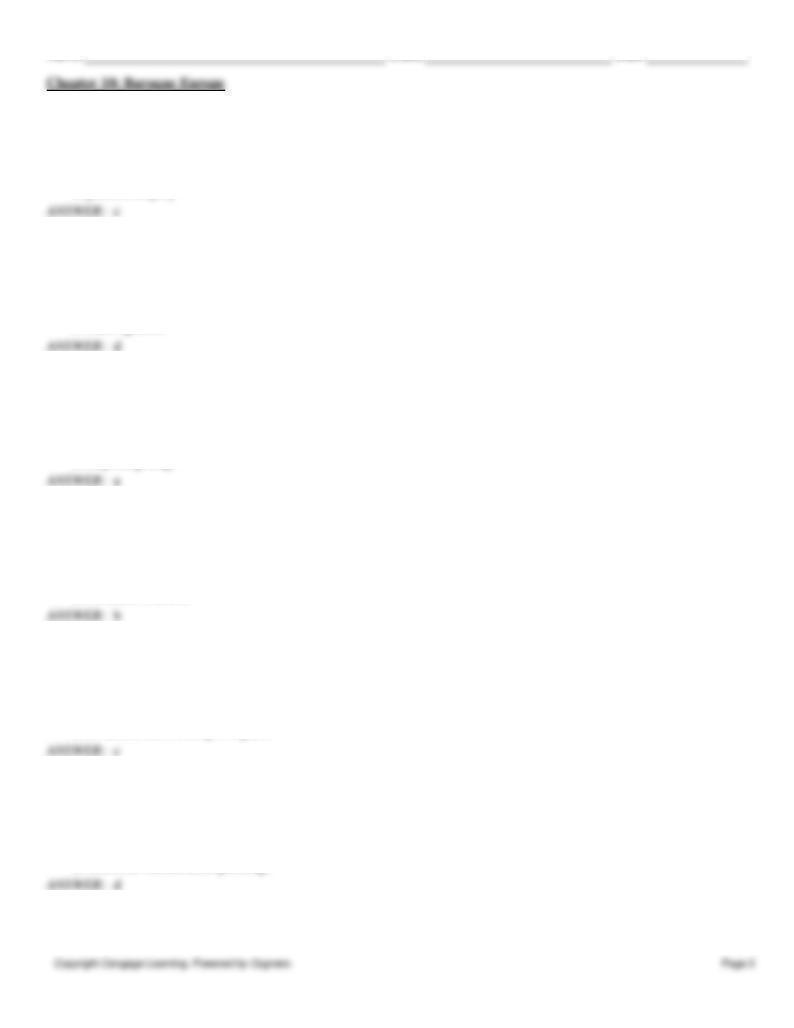
Name:
Class:
Date:
7. Contributing to the sense of theatricality, _____ usually plays an important role in Bernini’s sculptures.
a.
the absence of motion
b.
niche-like enclosures
c.
the element of time
d.
painted drapery
8. _____ believed that re-creating spiritual experiences in artworks would increase devotion and piety.
a.
Charles I
b.
Frans Hals
c.
Martin Luther
d.
Saint Ignatius
9. The _____ is depicted in the Cornaro Chapel by Bernini.
a.
mystical vision of Saint Teresa
b.
Last Supper
c.
story of Jonah and the whale
d.
Hapsburg kings
10. _____ went further than any previous architect in emphasizing sculptural qualities of a building.
a.
Fra Andrea Pozzo
b.
Francesco Borromini
c.
Gianlorenzo Bernini
d.
Annibale Carracci
11. The Carracci’s Bolognese academy was established on the principle that _____.
a.
artists are divinely inspired
b.
art must be passed down through generations
c.
art can be taught
d.
all artists must belong to a guild
12. The various scenes that make up Carracci’s Loves of the Gods ceiling painting _____.
a.
are based on the Camera Picta by Mantegna
b.
form the shape of a diamond
c.
face the same direction
d.
resemble framed easel paintings
13. The artist Caravaggio was denounced by other artists and critics for _____.
a.
not following classical models
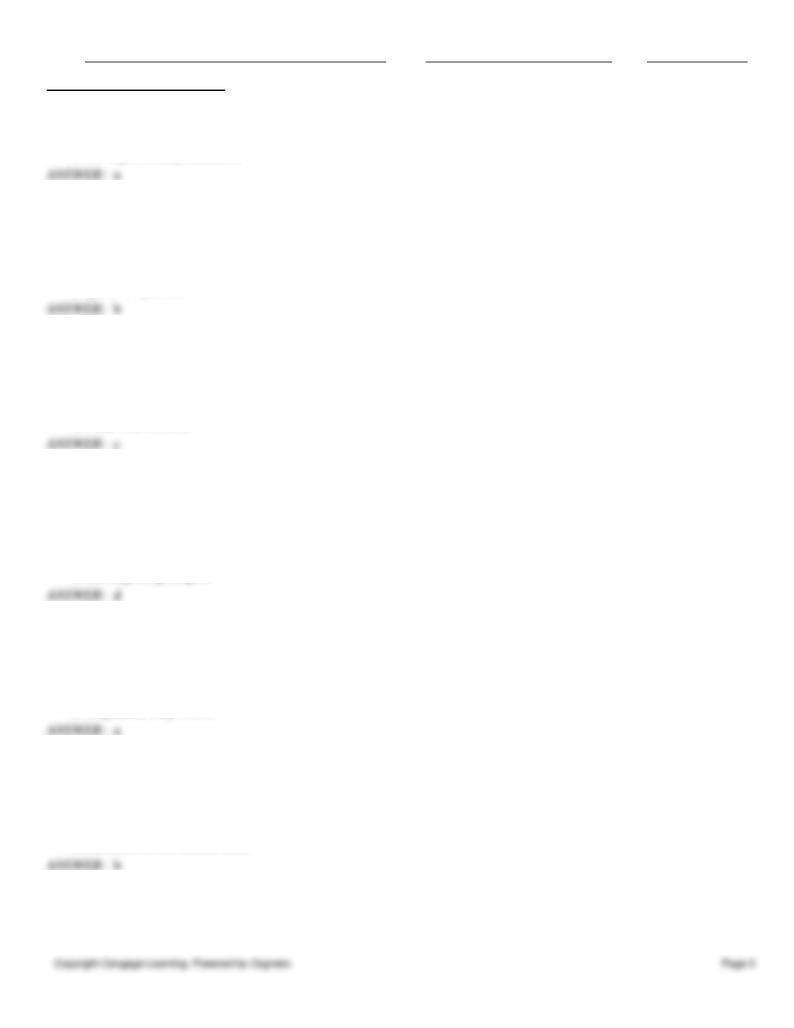
Name:
Class:
Date:
Chapter 10: Baroque Europe
b.
developing new types of paint
c.
using bright colors
d.
having too many assistants
14. _____ is the term for the dark settings in Caravaggio’s art.
a.
Circles of confusion
b.
Tenebrism
c.
Psychology of light
d.
Quadro riportato
15. The artist _____ helped disseminate Caravaggio’s style throughout Italy.
a.
Annibale Carracci
b.
Gianlorenzo Bernini
c.
Artemisia Gentileschi
d.
Peter Paul Rubens
16. Although they became an international power in the 16th century, _____ was in decline by the beginning of the 17th
century.
a.
Italy
b.
the Dutch Republic
c.
France
d.
the Hapsburg Empire
17. Similar to Italian art, Spanish artists, committed to Catholicism, sought ways to _____.
a.
move viewers and increase devotion
b.
incorporate genre subjects
c.
portray Old Testament scenes
d.
emphasize only Christ
18. The primary patrons of the Spanish artist Francisco de Zurbarán were _____.
a.
members of nobility
b.
rich monastic orders
c.
knights
d.
members of the middle class
19. Philip IV of Spain named _____ chief court painter and palace chamberlain.
a.
Peter Paul Rubens
b.
Franceso de Zurbarán
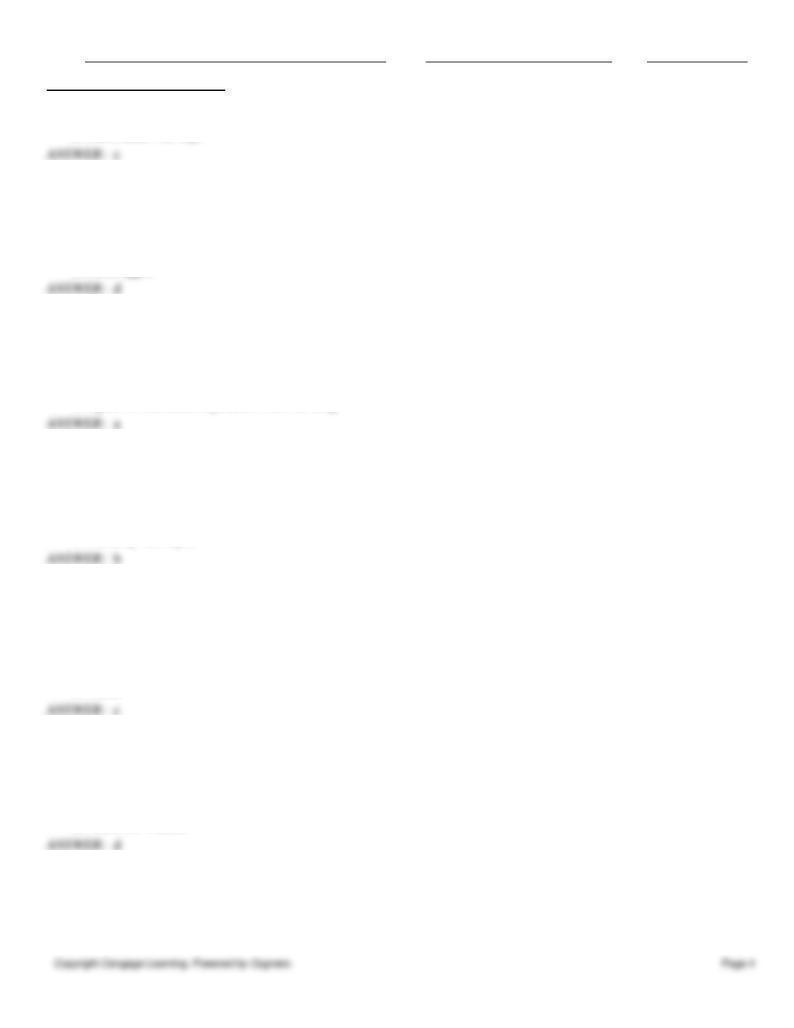
Name:
Class:
Date:
Chapter 10: Baroque Europe
c.
Diego Velázquez
d.
Rembrandt van Rijn
20. In the use of commonplace figures and dark settings, Diego Velázquez displayed _____ influence.
a.
Peter Paul Rubens
b.
Annibale Carracci
c.
Fra Andrea Pozzo
d.
Caravaggio
21. On a general level, Diego Velázquez painted Las Meninas to _____.
a.
elevate his status and his profession
b.
find a husband for the Infanta
c.
teach the king how to paint
d.
repair his tarnished reputation with the king
22. The Flemish artist _____ developed the first pan-European painting style.
a.
Rachel Ruysch
b.
Peter Paul Rubens
c.
Pieter Claesz
d.
Anthony van Dyck
23. Peter Paul Rubens’s twisted and powerful figures in the Elevation of the Cross demonstrate the artist’s admiration of
_____.
a.
Jan van Eyck
b.
Raphael
c.
Michelangelo
d.
Titian
24. _____ commissioned Peter Paul Rubens to paint a series of paintings that would glorify and memorialize her career.
a.
Judith van Leyster
b.
Artemisia Gentileschi
c.
Rachel Ruysch
d.
Marie de’ Medici
25. The Dutch artist _____ produced lively portraits for middle-class patrons that avoided traditional formulas.
a.
Frans Hals
b.
Jan Vermeer
c.
Nicholas Poussin
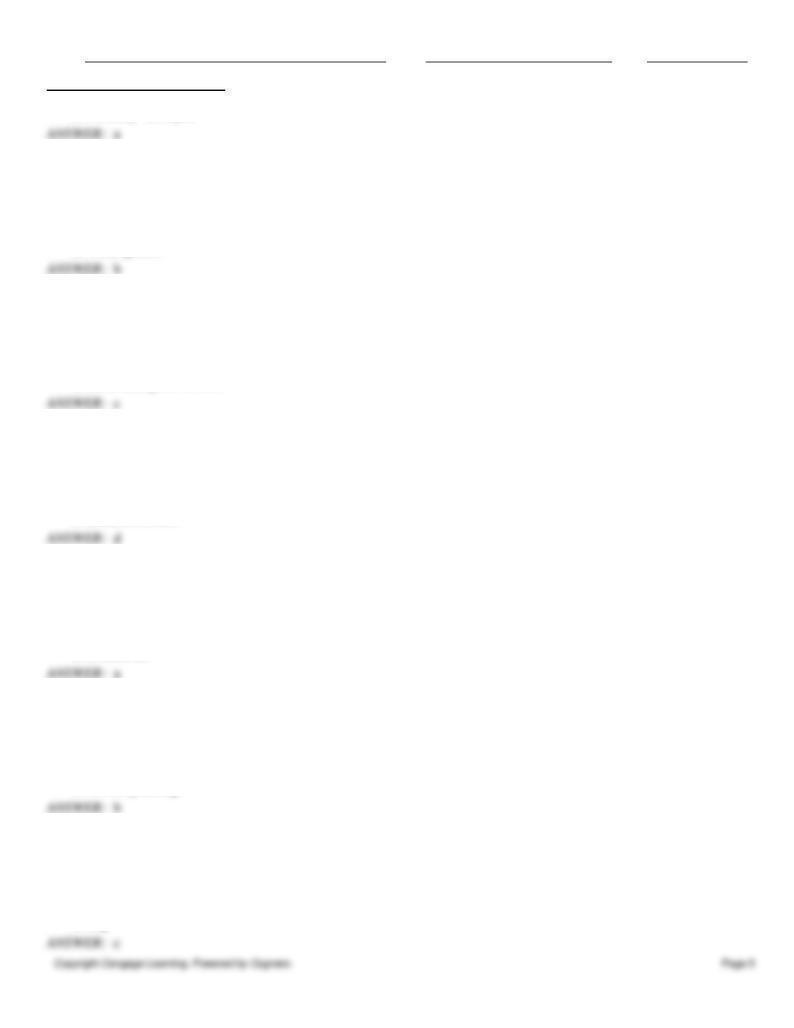
Name:
Class:
Date:
Chapter 10: Baroque Europe
d.
Anthony van Dyck
26. Who held power in the Dutch Republic?
a.
The king
b.
Merchants and manufacturers
c.
The Catholic Church
d.
Trade guilds
27. Along with being a painter, Rembrandt was successful selling his _____.
a.
sculptures
b.
antique statues
c.
prints
d.
handmade paint brushes
28. Vermeer’s convincing rendering of space and light may have been achieved with the aid of a _____.
a.
wooden model for the scene
b.
telescope
c.
magnifying glass
d.
camera obscura
29. Vermeer’s Art of Painting has been interpreted as an allegory of _____.
a.
painting inspired by history
b.
the importance of Catholicism
c.
greed
d.
abstract art
30. _____ reflect the pride the Dutch had in their accomplishments and possessions.
a.
Paintings placed in reformed churches
b.
Still-life paintings
c.
Animal paintings
d.
Textile paintings
31. One of the references to mortality in Claesz’s Vanitas Still Life is a _____.
a.
scale
b.
lobster
c.
tipped glass
d.
dog
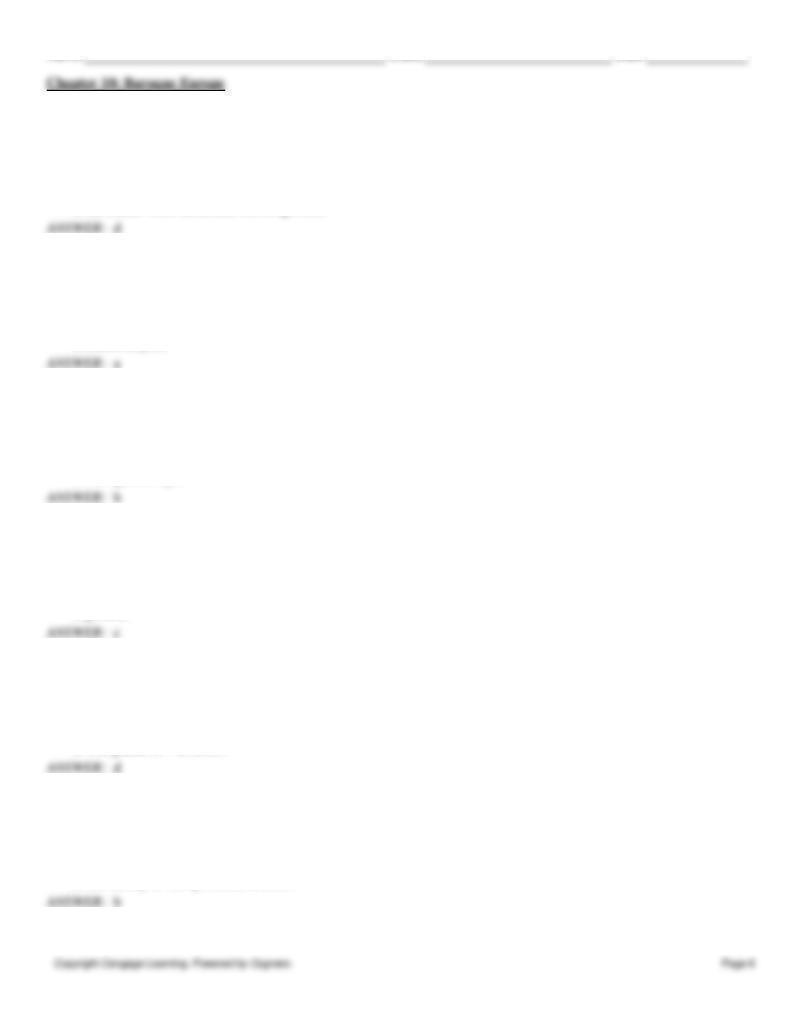
Name:
Class:
Date:
32. Flower painting was very popular in the Dutch Republic because _____.
a.
flowers evoked the importance of the Virgin Mary
b.
they had few native flowers
c.
figure painting was banned
d.
the Dutch were successful flower growers
33. The artist _____ acquired a significant reputation painting lush paintings of flowers.
a.
Rachel Ruysch
b.
Hyacinthe Rigaud
c.
Frans Hals
d.
Judith Leyster
34. The artist Nicolas Poussin established _____ as the leading approach to art in France.
a.
the theatrical style
b.
the classical style
c.
tenebrism
d.
the Spanish style
35. According to Nicolas Poussin, the _____ was the foundation for creating a painting in “the grand manner.”
a.
genre subject
b.
painterly brushstrokes
c.
noble subject
d.
portrait
36. _____ was the greatest architectural project of the age and a symbol of Louis XIV’s power.
a.
The city hall in Paris
b.
Sainte-Chapelle
c.
The repair of Notre Dame
d.
The palace of Versailles
37. Rembrandt’s The Company of Captain Frans Banning Cocq represents _____.
a.
the maneuvers of the Flemish military
b.
a military company assembling for a parade
c.
the victory of the Dutch army at Utrecht
d.
the victory of Cocq’s forces at Delft
38. How did Fra Andrea Pozzo create the illusion of Heaven opening above the heads of the congregation in the church of
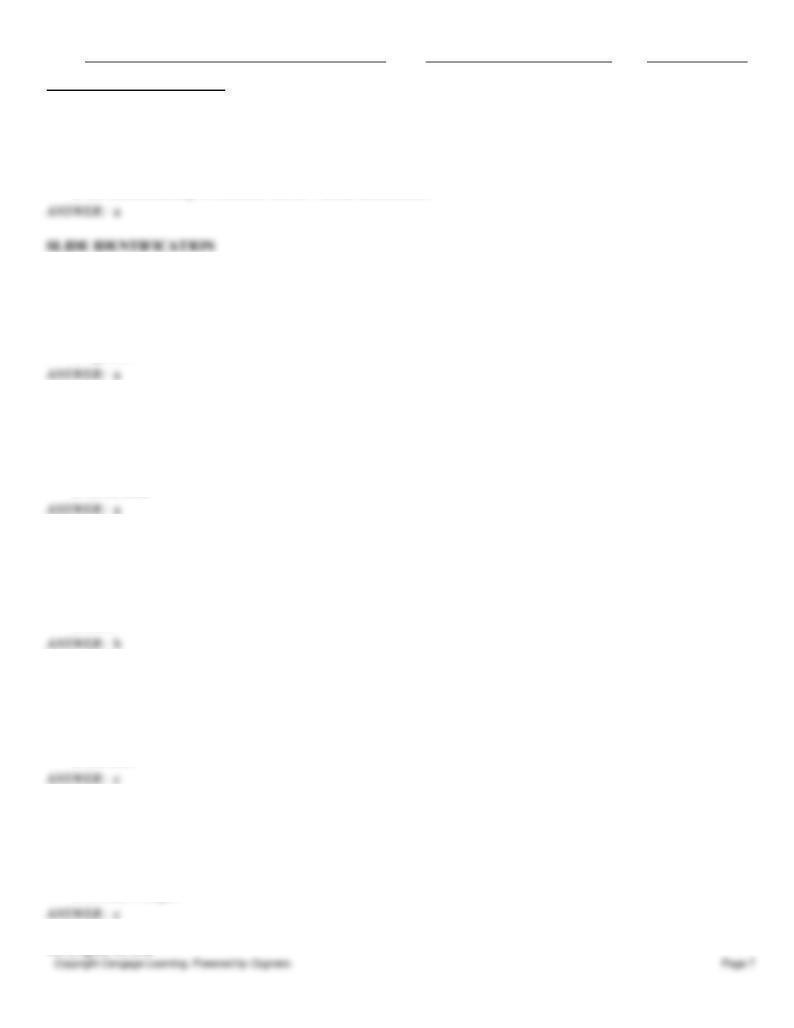
Name:
Class:
Date:
Chapter 10: Baroque Europe
Sant’Ignazio?
a.
He illusionistically continued the church’s architecture into the vault.
b.
He renovated the nave ceiling to provide a better view of the paintings in the vault.
c.
He painted quadro riportato to simulate a painted view of Heaven.
d.
He illusionistically lowered the church’s actual architecture.
39. (Figure 10-15)
a.
Flemish
b.
Dutch
c.
French
d.
Spanish
40. (Figure 10-18)
a.
Hals
b.
Vermeer
c.
Leyster
d.
Rembrandt
41. (Figure 10-21)
a.
Ruysch
b.
Rembrandt
c.
Leyster
d.
Hals
42. (Figure 10-9)
a.
Rembrandt
b.
Poussin
c.
Caravaggio
d.
Carracci
43. (Figure 10-6)
a.
Saint Peter’s
b.
Saint Paul’s
c.
San Carlo alle Quattro Fontane
d.
Cornaro Chapel
44. (Figure 10-24)
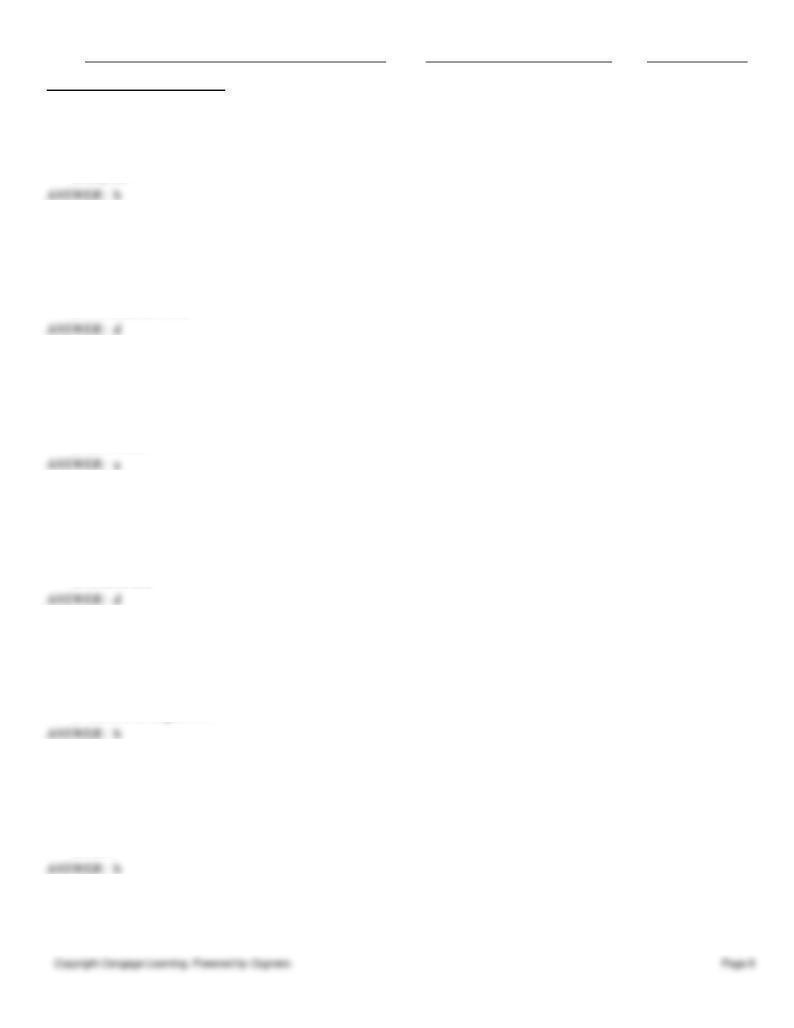
Name:
Class:
Date:
Chapter 10: Baroque Europe
a.
Rembrandt
b.
Vermeer
c.
Claesz
d.
Leyster
45. (Figure 10-11)
a.
Rembrandt
b.
Borromini
c.
Bernini
d.
Fra Andrea Pozzo
46. (Figure 10-5)
a.
Bernini
b.
Michelangelo
c.
Maderno
d.
Borromini
47. (Figure 10-10)
a.
Carracci
b.
Caravaggio
c.
Barnini
d.
Gentileschi
48. (Figure 10-19)
a.
Artemisia Gentileschi
b.
Judith Leyster
c.
Rachel Ruysch
d.
Sofonisba Anguissols
49. (Figure 10-17)
a.
Rubens
b.
Van Dyck
c.
Rembrandt
d.
Hals
50. (Figure 10-23)
a.
Flemish
b.
Italian
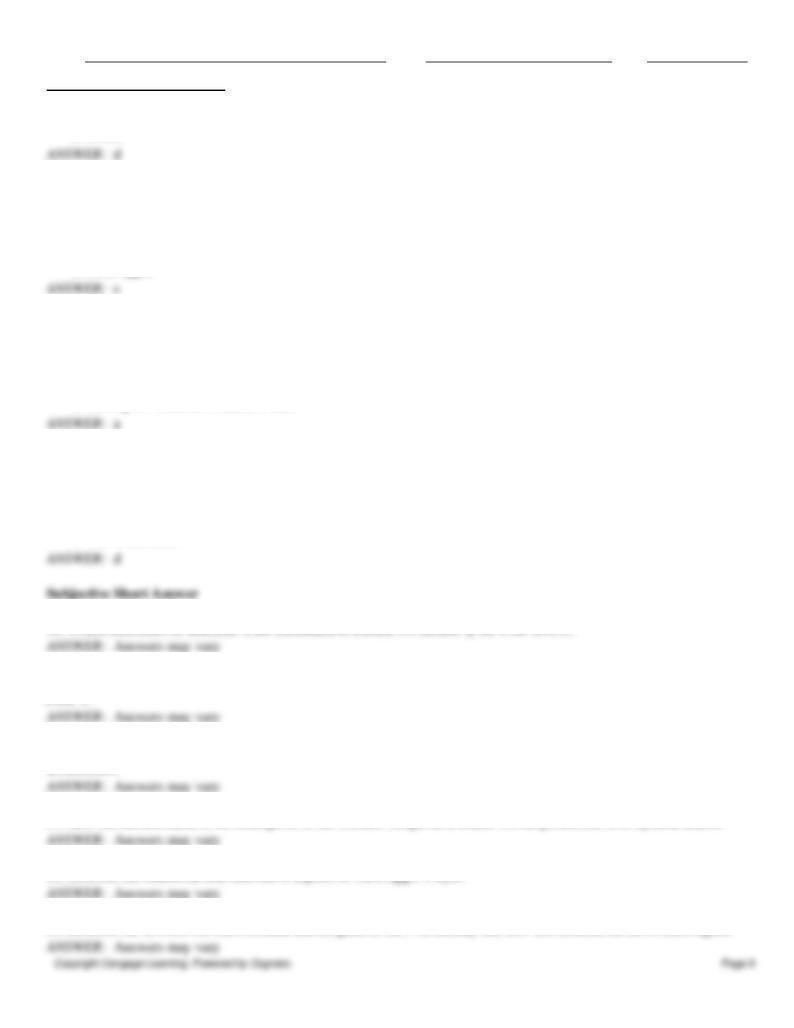
Name:
Class:
Date:
Chapter 10: Baroque Europe
c.
French
d.
Dutch
51. (Figure 10-22)
a.
Hals
b.
Vermeer
c.
Rembrandt
d.
Caravaggio
52. (Figure 10-11)
a.
Ceiling of Sant’Ignazio, Rome
b.
Ceiling of Farnese Palace, Rome
c.
Ceiling of Villa Ludovisi, Rome
d.
Ceiling of Versaillles Palace, France
53. (Figure 10-27)
a.
Italy
b.
France
c.
Spain
d.
The Netherlands
54. Which references to Innocent X are embedded in Bernini’s Fountain of the Four Rivers?
55. How did Bernini’s piazza design incorporate existing features and compensate for some of the visual qualities of Saint
Peter’s?
56. How is Carlo Maderno’s facade for Saint Peter’s representative of the basic design principles of the early Baroque in
architecture?
57. How did Bernini achieve his conception of the Cornaro Chapel as a theater for the production of a mystical drama?
58. Describe the traditional and innovative aspects of Caravaggio’s style.
59. Describe the division between Holland and Belgium in the 17th century and how this affected the art of each region.
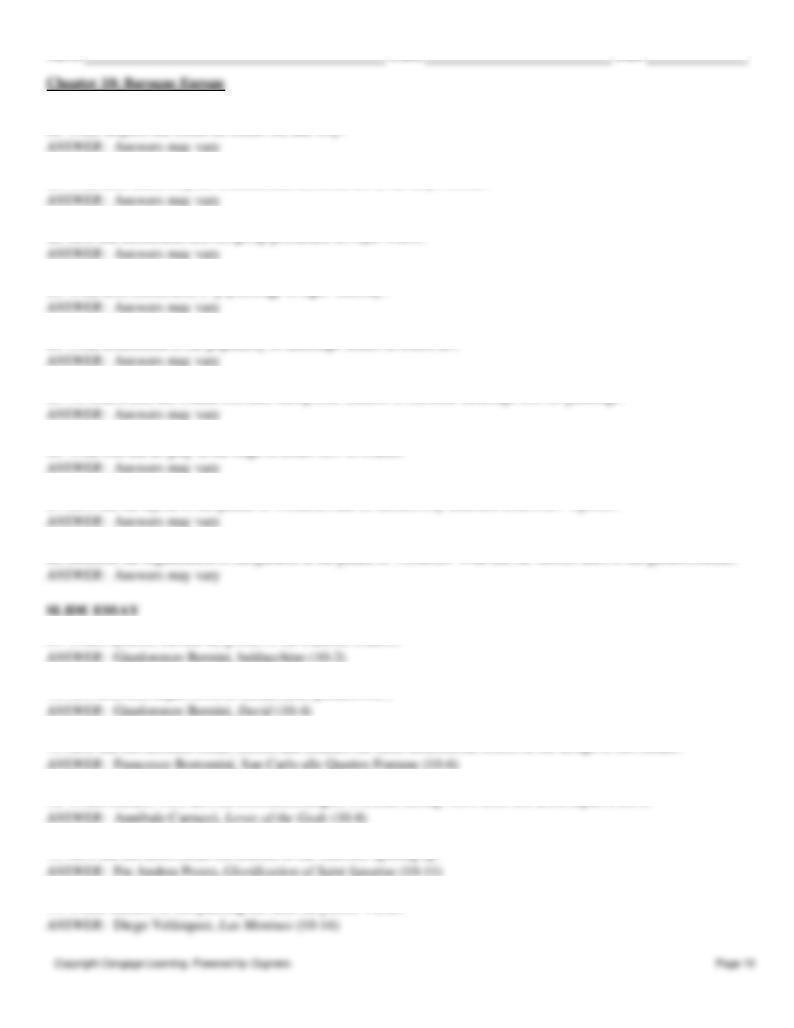
Name:
Class:
Date:
60. What subjects did Dutch art center on, and why?
61. What does Judith Leyster communicate about herself in her Self-Portrait?
62. How did Rembrandt enliven group portraiture in Night Watch?
63. What does Rembrandt’s “psychology of light” embody?
64. What contributed to the popularity of landscape scenes in Dutch art?
65. To what extent did Claude Lorraine incorporate features of classical landscape into his paintings?
66. What role did art play in the reign of Louis XIV of France?
67. How did the layout of the palace of Versailles and its satellite city reinforce Louis XIV’s power?
68. Describe the organization of the gardens at the palace of Versailles. What did the various units of the garden contain?
69. Which symbols elevate the power of the Catholic Church?
70. How does this depart from its Renaissance predecessors?
71. How did this architect create motion and enhance the three-dimensional effects in the design of this facade?
72. Which features were derived from Michelangelo’s Sistine ceiling? How does this artist depart from it?
73. How did this artist create the illusion of the Heavens opening up?
74. Which features of this painting elevated the painter’s craft?
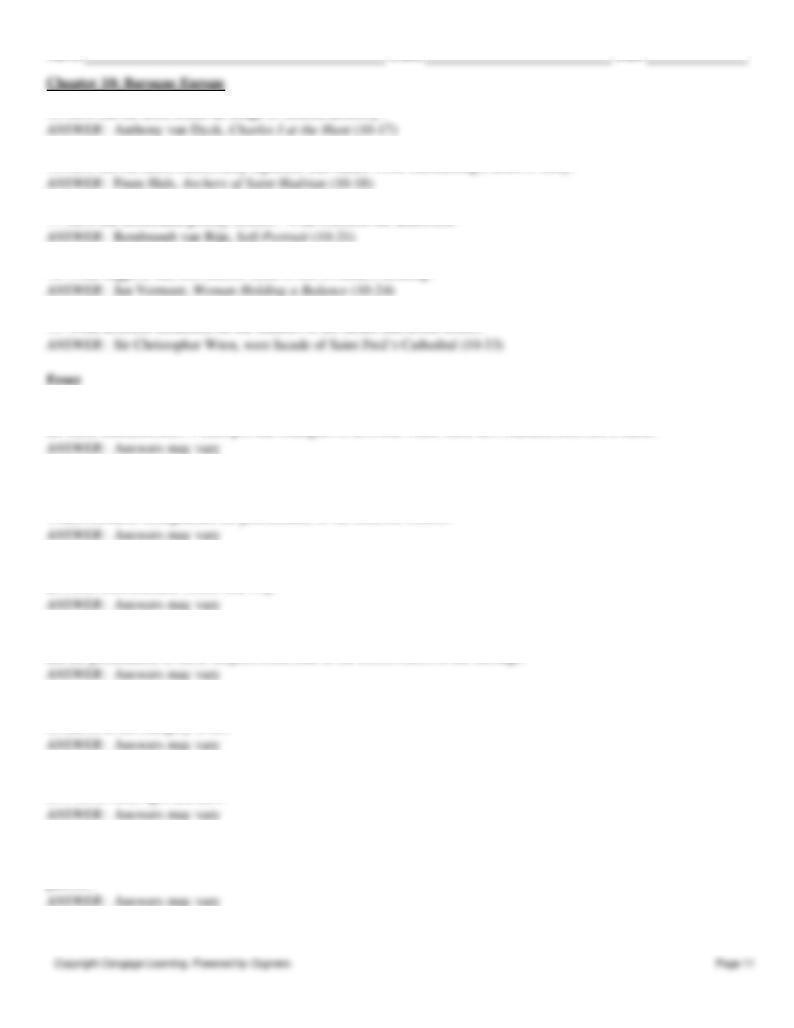
Name:
Class:
Date:
75. How did the artist create an image of relaxed authority?
76. How did this artist successfully represent individuals while maintaining a sense of unity?
77. How did Rembrandt portray himself? What concerns are addressed?
78. What suggests that this interior scene is full of hidden meaning?
79. What different influences do the features of the facade and dome reflect?
80. Scholars use the term Baroque to describe new stylistic characteristics that emerged in 17th-century Italian art. What
are these characteristics? Please provide examples of artworks where these new characteristics are evident.
81. The construction of Saint Peter’s began in the 16th century and continued into the 17th century. Which features were
constructed in the Baroque age? How did the new building elements conform to existing principles or depart from them?
Which elements strengthened the preeminence of the Catholic Church?
82. Drama and theatricality are adjectives often used to describe Baroque art. Citing examples, describe how individual
artworks used dramatic effects and why.
83. Much of the art produced for Catholic Spain and Italy was in the service church. What subjects were popular? How
did the presentation of these subjects contribute to the effectiveness of the message?
84. In the Dutch Republic, portraiture and group portraiture were popular themes for art. Which artists were especially
inventive in this category of art?
85. Artists of the Baroque period were especially sophisticated in their use of light and dark. Citing examples, describe
how artists used light and dark.
86. How did the Dutch Republic differ from other nations in the 17th century in terms of religion and its power structure?
How did this affect the artworks produced in this country? What subjects became popular, and who were the main art
patrons?
87. Several artists developed very sophisticated techniques in handling their respective mediums. Citing examples, please
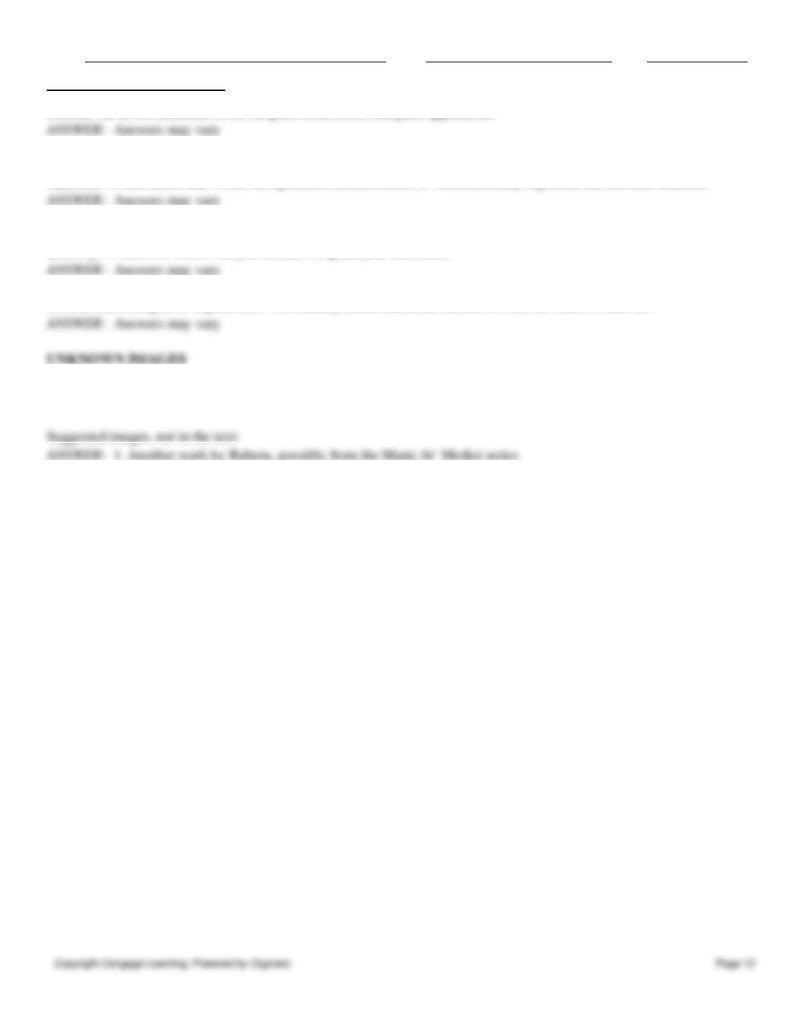
Name:
Class:
Date:
Chapter 10: Baroque Europe
consider the novel treatment of the sculpted form, color, and paint application.
88. Although new trends emerged in the 17th century, many artists remained bound to the classical and Renaissance
traditions. Which artists and works incorporated classical motifs or wholeheartedly expressed the classical tradition?
89. You have been asked to assemble an exhibition of 17th-century paintings addressing the themes of power and
authority. Which five works will you include? Explain your selections.
90. Use four examples to explain how 17th-century artists addressed themselves and the status of their art.
91. Attribute the images on the screen to a culture and give an approximate date. Give the reasons for your attributions,
using complete sentences and referring to specific works discussed in class.
2. Another work by Rembrandt, possibly a portrait
3. Another work by Velázquez, possibly a portrait of Philip IV
4. Another image of Versailles, possibly an interior
5. Another work by Caravaggio, possibly Death of the Virgin